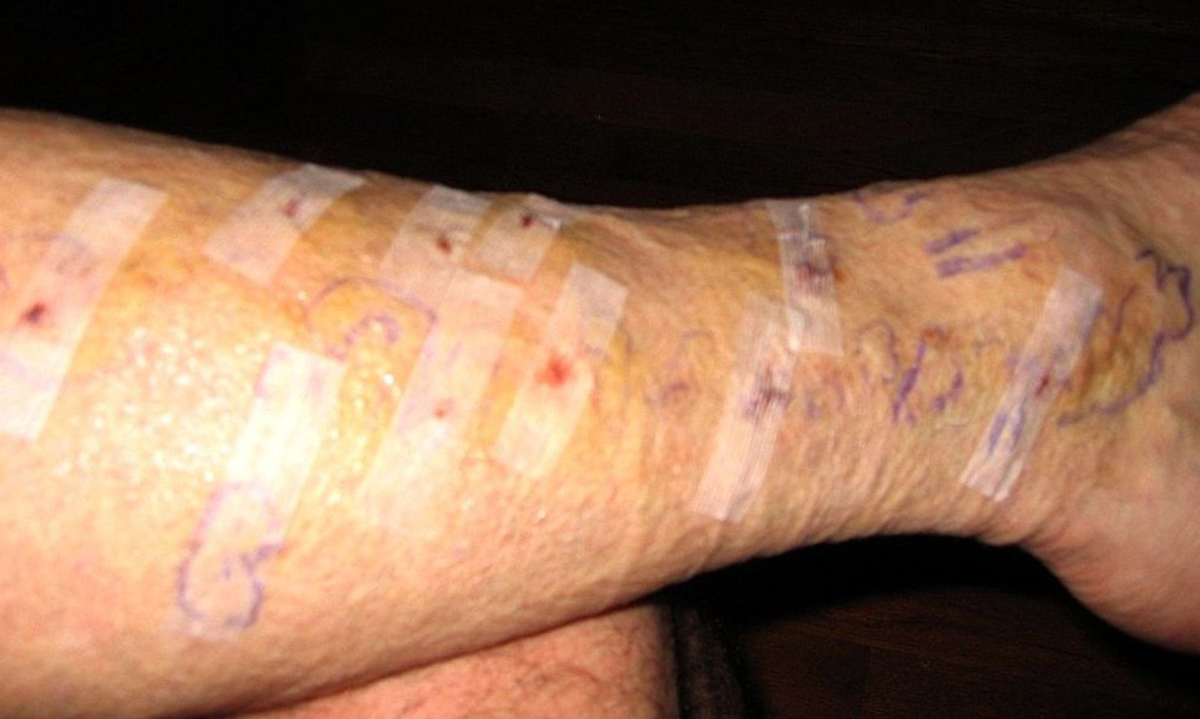Table of Contents
If you think you have varicose veins, you could try some self treatment first. Regular exercise and wearing supportive stockings are options. Elevating your legs also tends to help. People who are bothered by the veins, and especially those who have pain and other associated symptoms, should always see a doctor to get the veins checked out. If you are reluctant to go to your doctor, remember that blood clots and skin ulcers are possible complications you'd probably rather prevent.

Varicose Veins During Pregnancy
Pregnant women should know that varicose veins are relatively common while you are expecting. This is in part due to the fact that your blood volume increases during pregnancy, and in part due to the fact that your legs have to deal with a lot more weight during this time. It's good to show any varicose veins you have to your OB, but it's also nice to know that they usually do go away very soon after you give birth — especially if you are active during your postpartum stage.
Your Appointment
When you see your doctor, you'll get a bunch of questions about your symptoms and when the veins first made their appearance. Your doctor will also examine you while you are standing and sitting. An ultrasound of your legs (or other area) can show what is going on underneath the skin's surface. Concretely, it looks for signs that your veins aren't functioning well and checks for any blood clots.
Non-Invasive Treatment
Your doctor is most likely to suggest some simple changes that aim to reduce your symptoms. This may include wearing supportive compression stockings, elevating your legs, exercising regularly and losing weight if you are overweight. You may also be advised against wearing tight-fitting clothes.
More Radical Measures
People with severe varicose veins or people whose varicose veins do not respond to the non-invasive treatment options mentioned above may be good candidates for more radical treatments. There are many different options here, and it is essential that you consult an unbiased doctor before going ahead with any one of them.
Sclerotherapy is a procedure in which your healthcare provider injects your varicose veins with something that closes them up. Though this procedure may need to be repeated several times, it is often effective for small and medium-sized varicose veins. Symptoms soon fade away if the treatment is effective. You don't need any anesthesia to undergo sclerotherapy, and it can be done in your doctor's clinic.
Laser surgery is becoming increasingly popular. This also closes varicose veins and spider veins, and doesn't require either injections or incisions. It's pretty non-invasive but beware — it's possible that your varicose veins recur after laser surgery.
In Catheter-assisted procedures, your healthcare provider inserts a catheter — a small tube — into the relevant vein. The catheter is hot, and the heat destroys the vein. This procedure is a good option for larger varicose veins that may not respond to sclerotherapy or laser surgery.
VenaSeal is a relatively newer procedure for the treatment of varicose veins, particularly for the closure of insufficient saphenous veins. Instead of using heat (as in thermal ablation techniques) or chemicals (as in sclerotherapy), it uses a medical adhesive. Under ultrasound guidance, a catheter is introduced into the varicose vein. Through this catheter, a medical adhesive (cyanoacrylate) is delivered to the affected vein segment. The adhesive seals the vein, and over time, the sealed vein will be absorbed by the body.
Vein stripping is a small surgical procedure that removes long varicose veins with the help of multiple incisions. The good news is that you usually don't have to stay in hospital for this procedure, and can go home right afterwards.
Phlebectomy, sometimes referred to as microphlebectomy or ambulatory phlebectomy, is a minimally invasive procedure used to remove varicose veins that lie just beneath the skin's surface. This method is particularly suited for treating larger, bulging veins that are too twisted for other treatments. In phlebectomy, the bulging veins are physically removed, producing instant cosmetic results.
See Also: Varicose Veins Treatment Options
Endoscopic vein surgery is a bigger procedure reserved for those with severe varicose veins that have severe symptoms, including leg ulcers. Veins are surgically removed with the aid of a small camera that is inserted into the leg. This, too, can usually be carried out as an outpatient procedure.
- Photo courtesy of Lakeland1999 by Wikimedia Commons : en.wikipedia.org/wiki/File:Leg_Before_1.jpg
- Photo courtesy of Lakeland1999 by Wikimedia Commons : commons.wikimedia.org/wiki/File:Leg_3_days_after_operation.jpg


Your thoughts on this